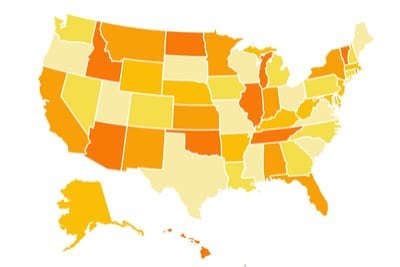If you are considering a career in teaching, a job as a paraprofessional may be a good place to start…and possibly stay. So what is a teaching paraprofessional? Who are the teaching paraprofessionals, and what do they do?
Teaching paraprofessional job description
A teaching paraprofessional acts as an assistant to a fully licensed teacher. Teaching parapros help supervise students as they do activities and complete in-class assignments under the direction of the teacher who leads the class. Parapros also help supervise non-classroom activities during the school day, working with kids in the lunchroom, on the playground, and at special events during school hours.
There is seldom a fixed list of duties for a teaching paraprofessional. Instead, it’s the parapro’s job to provide any support requested of them by the licensed teachers they work under. Parapros may also assist the principal and other school staff, when called upon.
Where do teaching paraprofessionals work?
Teaching paraprofessionals work anywhere that licensed teachers do. For the most part, this means K-12 schools. However, child care centers also employ parapros, as most daycare centers include a team of teachers who are licensed in early childhood education.
Teaching paraprofessionals are most likely to work in classrooms where the licensed teacher needs a lot of assistance, or where the students need a lot of individual attention and care. Because of this, most job opportunities for parapros are found in larger classrooms in urban schools, special education classes, ESL classes, and infant/toddler programs at daycare centers.
What is the salary for teaching paraprofessionals?
According to the United States Bureau of Labor, paraprofessional teacher assistants make around $25,000 a year, on average. These statistics seem to apply to full-time parapros only, though. Many paraprofessional positions are part-time rather than full-time, and these part-time positions usually pay between $10 and $13 an hour.
Some teaching paraprofessionals make more than others, however. Special education paraprofessional work pays better than other types of teaching assistance. ESL parapros usually make a little more than other teacher’s aides as well. Parapros who work at daycare centers get paid less than average, sometimes making as little as $8 0r $9 an hour. The biggest outlier, however, is the pay of teaching paraprofessionals at K-12 schools on U.S. military bases. Some military K-12 parapros can make upwards of $15 an hour. I’ve even seen teaching paraprofessional job postings in remote and “hardship” U.S. military locations that pay around $20 an hour or pay in the high $30k to low $40k per year.
Teaching paraprofessional qualifications
The required qualifications for teaching paraprofessionals are decided at the state and local level. So paraprofessional eligibility can vary a bit depending on location. For the most part, schools require their teaching paraprofessionals to have a high school diploma, and to either have a state teaching parapro license, or be eligible to get such a license after they’re hired. Usually, getting a teaching paraprofessional license is a matter of taking a short course (anywhere from a few hours to a few days in length), and passing a certification exam. The most widely accepted parapro certification exam is the Praxis ParaPro test.




